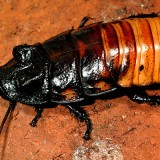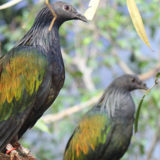CLASSIFICATION
Order: Passeriformes
Family: Emberizidae
Genus: Paroaria
Species: coronata
RANGE
South America. Eastern Bolivia and south central Brazil, south to north central Argentina and Uruguay. Was introduced to Hawaii (Oahu, Kauai & Maui). Red Crested Cardinals are not related to true cardinals at all. They are actually members of the tanager family, which includes North American species like the Scarlet and Summer Tanagers.
HABITAT
Prefer semi-open areas with shrubs and scattered trees. Tend to gather near water.
SIZE
Length: 6 – 7 inches.
LIFE EXPECTANCY
3 – 6 years in the wild. Up to 13 ½ years in captivity.
REPRODUCTION
- Breeding is usually from June to September.
- Pairs come together for the breeding season only.
- Nest in low shrubbery. Build sturdy nests of assorted plant materials
- Lay 2 – 3 eggs, greenish white in color with brownish or mauve streaks. Eggs are at times heavily streaked. Female does all of the incubation of the eggs, which hatch in 12 – 13 days.
- Both males and females feed the chicks, which fledge after about 2 weeks and are independent within another month.
DIET
Wild: Seeds, and a variety of insects.
Zoo: Seed (millet), assorted greens, mealworms and crickets
BEHAVIOR
Prefer stream side habitat, and both males and females can be seen “inspecting” vegetation from ½ meter to 8 meters above the water. This behavior generally seen during breeding season and may just be that the birds are searching for insects. This emergent vegetation has many aquatic insect larvae which is a good source of nutrients for young chicks.
POINTS OF INTEREST
- These birds are known to be adapted to dealing with a wide variety of habitats, including human inhabited areas.
- They have a very heavy beak, with an ability to crack very tough seeds.
- Have been kept as house pets, and breed readily in captivity.
STATUS
Common







